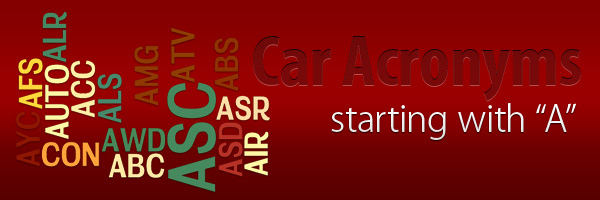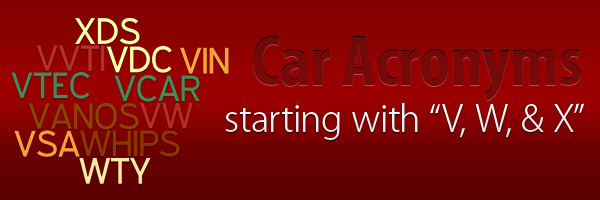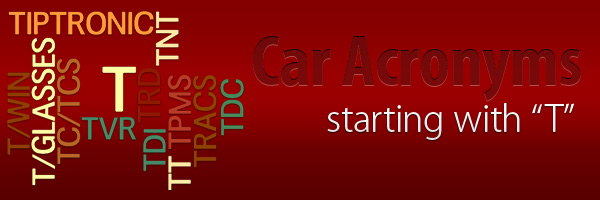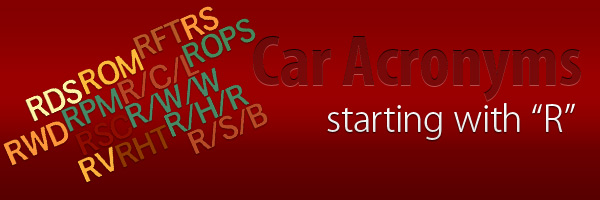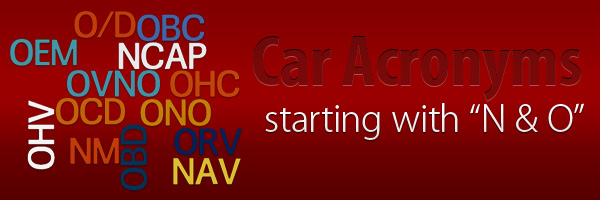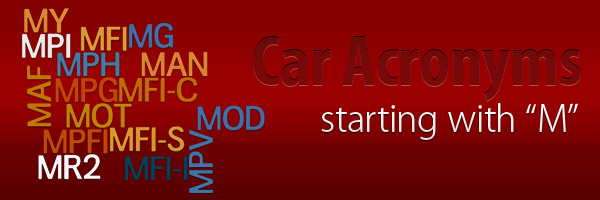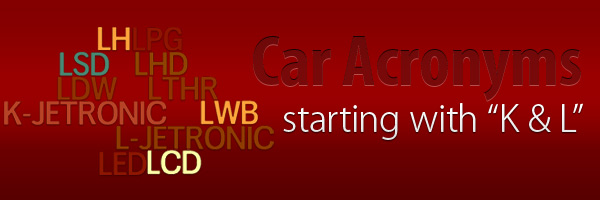ABC – Active Body Control
Developed by the Mercedes-Benz brand name, this control was designed to prevent body roll from happening, which is when the car leans toward the outside of the curve while cornering, braking, and accelerating. ABC is a suspension control system that is fully active. This system is controlled by computer sensors that detect body movement through hydraulic servomechanisms to correct the performance of the vehicle.
ABS – Anti-lock braking system
This is a safety braking system that is controlled by a computer to automatically control wheel slip and prevent the wheels from locking up when braking. ABS is considered a safety feature because it improves the driver’s ability to steer and control the vehicle by preventing the wheels from locking or skidding in the instance of emergency braking. A series of sensors is used in an anti-lock braking system along with a high-pressure hydraulic pump to keep the vehicle’s wheels rolling by reducing the force of braking and to hold tractive contact.
AC – Air conditioning or Alternating current
Alternating current is an electric current that reverses direction and curves in a circuit. AC recurrently switches direction or strength of the electric current. In North America, the alternation rate of the flow direction is 60 Hz, and in other areas of the world, the frequency is 50 Hz.
AC – AC Cars (formerly known as Auto Carriers)
The AC Car name came from the first commercial 3-wheelers formerly known under the name Auto Carriers Ltd. It is one of the oldest marques to be founded in Britain. An auto carrier is an auto-transporter fashioned specially to carry vans, truck and automobiles.
ACC – Adaptive Cruise Control also Adaptive chassis control
ACC is a cruise control system on an automobile that uses radar or laser to detect if another vehicle is getting too close to one’s vehicle. This radar unit or laser unit is situated behind the grille, and it slows the car down automatically if it determines if another vehicle’s distance is becoming dangerously close. This is also called adaptive chassis control because it is used for distance control.
AFS – Advanced front-lighting system
This is an intelligent lighting system that is used during nighttime, on poorly lit roads or even in city traffic. AFS adjusts automatically to the road course to facilitate the best view in unfavorable weather conditions to promote optimal visibility. This advanced headlight system relies on electronic sensors, transducers and actuators.
Air Con – Air conditioning
This is the process of altering the properties of air to reach more desirable conditions. Air conditioning is a major system that includes cooling, heating and ventilation of the air to enhance the temperature of the air. Automobile air conditioning systems cool the vehicle in hot weather and warm the vehicle in cold weather and are installed in most commercial vehicles.
ALR – Automatic Locking Retractor
An ALR is essentially a seat safety belt. This makes it possible to secure a child seat without having to use a seatbelt locking clip. When the Automatic locking retractor is activated, it permits the secure fastening of the child restraint system into place so that unintended motions will not happen.
ALS – Active lighting system or automatic lighting system
These systems aid in achieving optimal elucidation of traffic space. The aim is to use intense beam patterns to provide better visual perception to the driver. ALS automatically adjusts the lighting mechanism of the vehicle so that the driver can see the traffic or driving scene optimally.
AMG – Aufrecht, Melcher, Grossaspach
This is the setting mechanism car company of Mercedes-Benz. The company name is derived from the last names of the two founders, Hans-Werner Aufrecht and Erhard Melcher; Grossaspach comes from the small German town where the two founders started the AMG business.
ASC – Automatic/Active stability control
This is a system that controls traction and is also known as an anti-slippage regulation system. ASC is a system on production vehicles that is configured to prevent the loss of traction of the vehicle’s wheels while driving. The main aim of this system is to keep the control of the vehicle through the use of sensors that monitor steering inputs in relation to the road. As the system is active at all times, it will apply individual brakes when necessary to bring the vehicle back under control.
ASC + T – Automatic/active stability control with traction
Automatic/active stability control with traction is a system on vehicles that uses a counter-steer effect to bring the vehicle back under control. This system helps to prevent slippage by preventing the loss of traction of the vehicle’s wheels while driving. When ASC detects loss of steering control, it will automatically apply the brakes to provide stability; this increases the safety of a vehicle by reducing the instance of skidding.
ASD – Automatic limited-slip differential
Basically, the ASD helps to send torque to the wheels of a vehicle with traction. The differential is located at the rear of the vehicle, and transfers power of the drive shaft to the back wheels. The aim of the automatic limited-slip differential is to provide driving force to both of the rear wheels regardless of whether there is traction.
ASR – Anti Slip regulation (Audi Traction Control)
ASR forestalls excessive slippage of the driving wheels, which enhances lateral stability of the rear axle. This form of regulation and traction control uses an Anti-lock Brake System and an Electronic Accelerator to improve traction and maintain driver control of the vehicle. In the case of one wheel quickly rotating faster than the other wheels, ASR will tap into the engine management system to minimize power until the wheels cease spinning.
AT – Automatic Transmission
This refers to a type of transmission that allows the changing of gears and direction reversal without having to use manual shifting or a clutch operated with the feet. With an automatic transmission, gears are automatically shifted depending on the acceleration and speed of the vehicle. This style of transmission uses a torque converter rather than a clutch that is operated manually to shift gears, which promotes a smoother shift experience for the driver.
ATV – All Terrain Vehicle
This is a vehicle that drives on low-pressure tires along with handlebars to control the steering. An all terrain vehicle is designed to travel on off-roads and tougher terrain that most other vehicles, hence its name. These vehicles are typically operated as a motorcycle would be operated, but the extra one or two wheels allow for more stability while driving at slower speeds; it is not legal to drive an ATV on commercial roads in most states and provinces.
AUT – Automatic Transmission
This is either a pneumatic or hydraulic shifting mechanism that allows the motorized vehicle to shift gears automatically depending on the speed of the car. Often times, automatic transmission is dubbed “automatic drive.” With this type of transmission, the driver has more freedom and security while driving because they do not have to change gears manually themselves while maneuvering the vehicle.
AUTO – Automatic transmission (also Automobile and Automotive)
Often called “automatic gearbox” or “auto transmission,” this kind of transmission for motor vehicles can shift gear ratios without the driver having to manually change gears. Automatic transmissions have several setting modes depending on the make and the model of the specific transmission: Park (P), Reverse (R), Neutral/No gear (N), Drive (D), Overdrive (‘D,’ ‘OD’), Third (3), Second (2 or S), First (1 or L), Brake (B). Generally, automatic transmission makes the vehicle less complicated to drive than a vehicle equipped with a manual transmission.
AWD – 4 wheel drive, see 4WD and 4X4
AWD is similar to full time four wheel drive, but it does not have the slow speed power enhancing low range asset. This was designed to be a safety feature for basic road vehicles, not for all terrain vehicles that travel in rough terrain. The function of an all wheel drive system is to send torque to all four of the wheels of a vehicle for traction. The difference between AWD and 4WD is that all wheel drive uses a center differential that permits the front and rear axles to spin at different speeds, unlike four wheel drive that mechanically locks the front to the rear.
AYC – Active yaw control
This is a feature on a vehicle that is based on a rear differental that is controlled by a computer by using an active differential to transfer power to the wheels that have the best traction on the road. The main function of AYC is to adjust the torque split from side to side and front to rear to increase cornering speeds. Active yaw control was designed by Mitsubishi Motors and is controlled electronically instead of mechanically.

